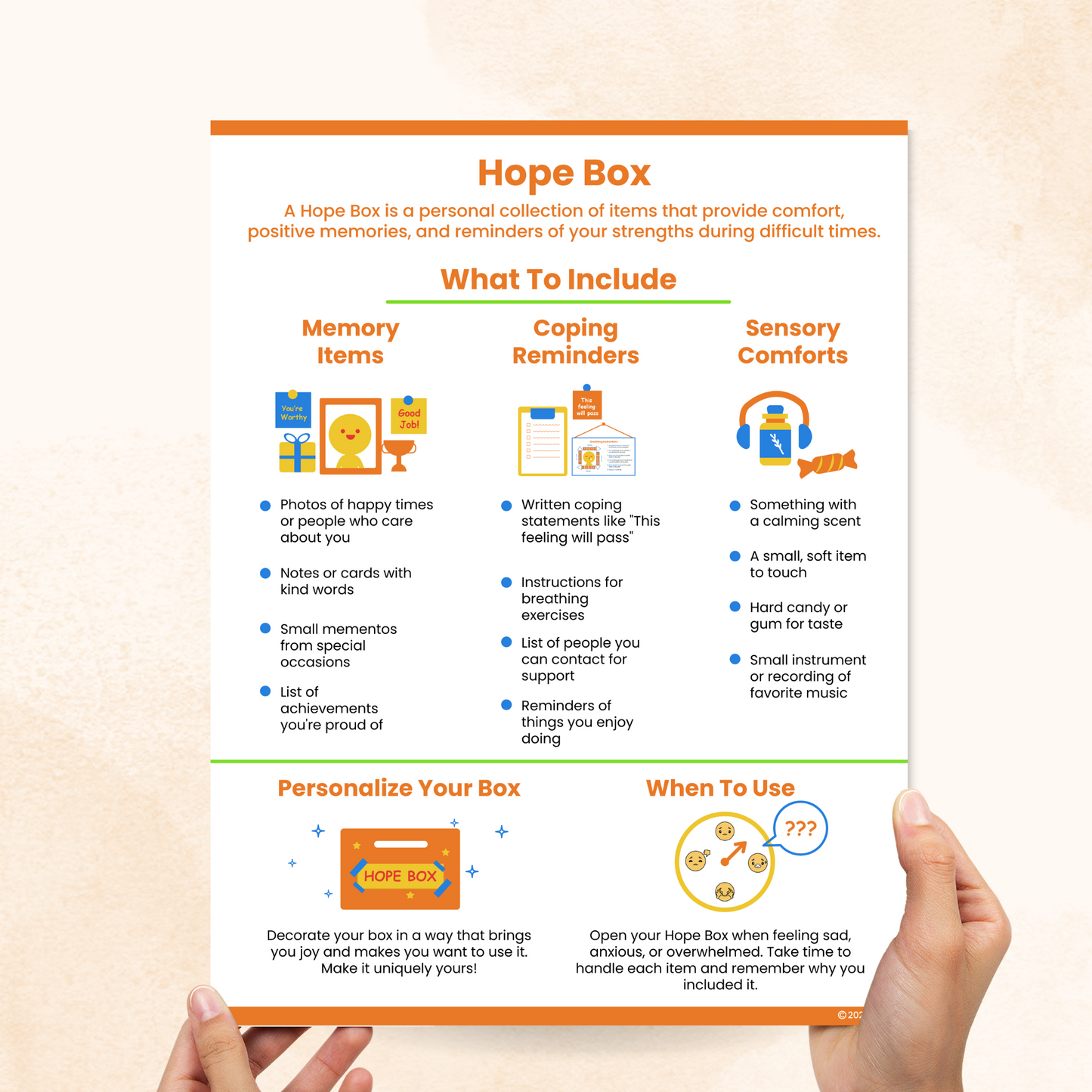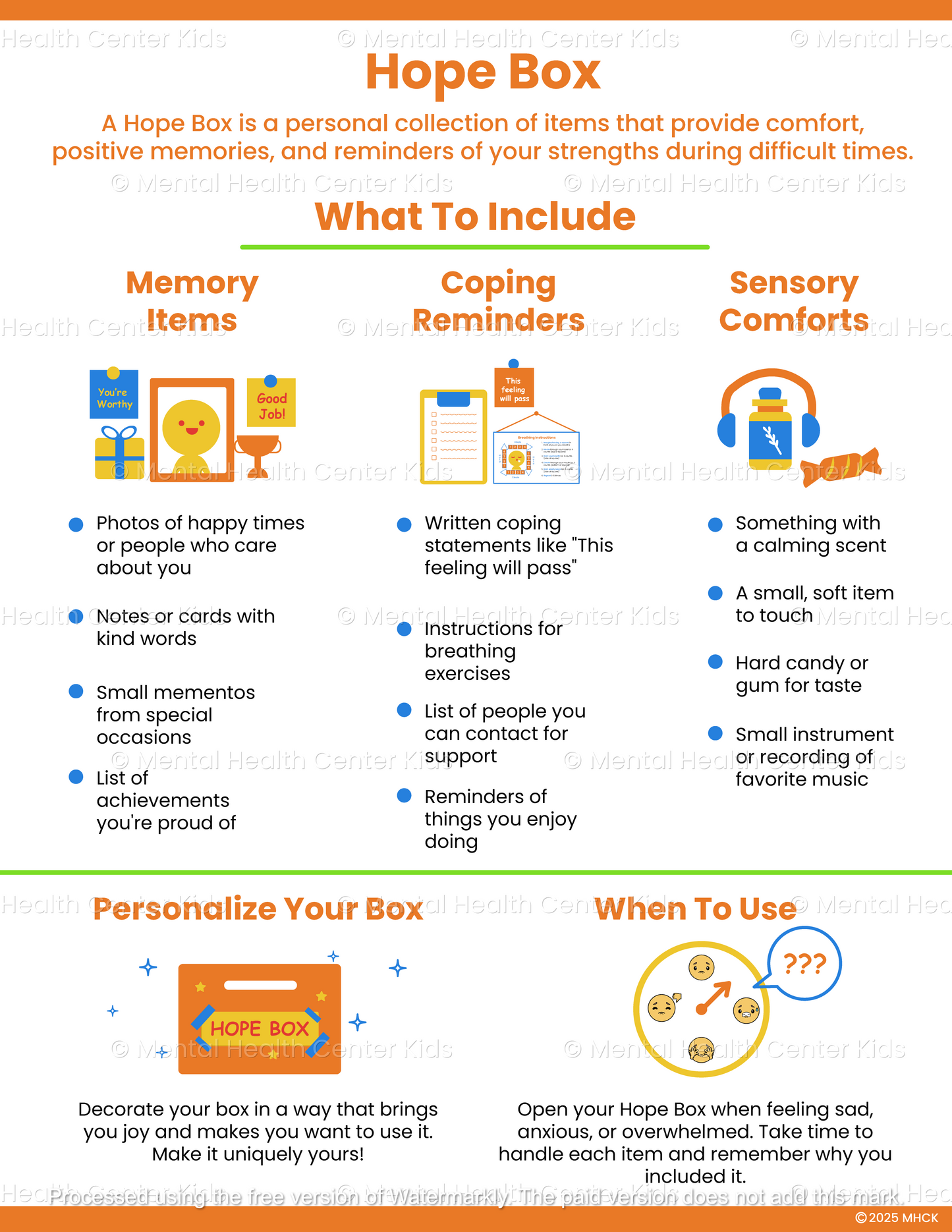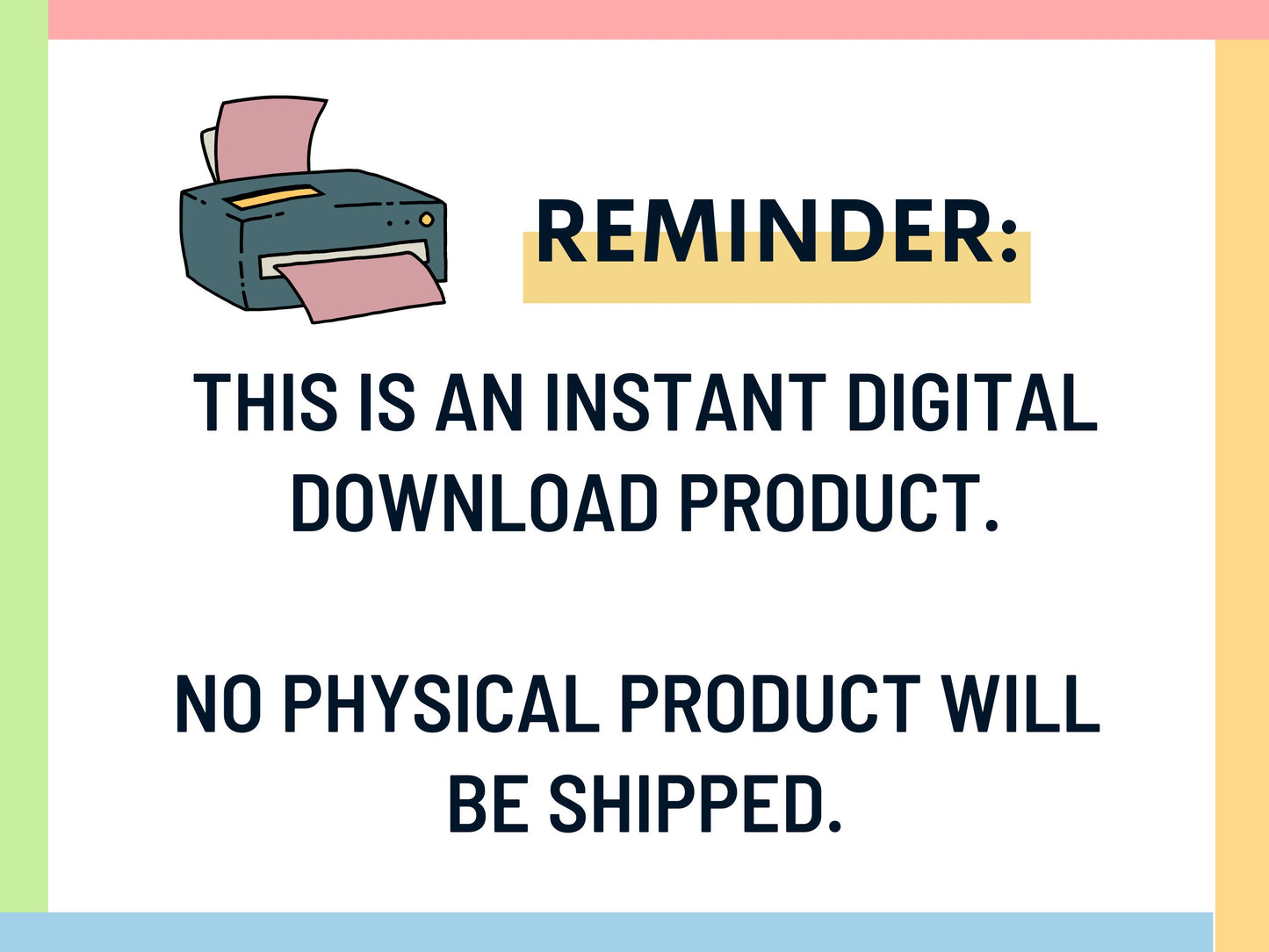


Hope can feel distant, especially for those who are carrying heavy thoughts or going through something difficult. It’s not always easy to hold on to—especially when emotions cloud the mind or things seem too heavy to handle. Many have found that collecting meaningful items—objects that remind them of love, strength, brighter days, or simply what matters most—can be a way to feel hopeful.
The Hope Box handout guides clients through creating their own self-soothing box filled with items that support emotional strength. It includes suggestions across different types of comfort: memory items like photos or handwritten notes, coping reminders, and sensory comforts. Clients are also encouraged to decorate their boxes in ways that reflect their personality.
Using a Hope Box gives kids and teens a resource to rely on when emotions feel too big, reminding them they are not stuck and that they’ve experienced strength before. Another idea is to pair their Hope Box with a signal — for example, placing a night light or a sticker near where the box is kept, which signals to themselves that this is a safe space to pause and breathe when emotions rise.
To strengthen this practice, caring adults can suggest a weekly hope check-in, where new memories or coping tools are added to the box — a favorite quote, a drawing from that week, or even a personal win written on a slip of paper.
*This item is an instant digital download. A link to download your files will be emailed to you once payment is confirmed.
Want more resources like this? Check out our full catalog of coping skills worksheets and handouts.
References:
- Bennett, A. G., Wood, D., Goldhagen, J., Butterfield, R., & Kraemer, D. F. (2014). Finding hope in hopeless environments. Journal of Adolescent Health, 54(2), S72-S73. https://doi.org/10.1016/j.jadohealth.2013.10.158
- Bishop, E. C., & Willis, K. (2014). ‘Without hope everything would be doom and gloom’: Young people talk about the importance of hope in their lives. Journal of Youth Studies, 17(6), 778-793. https://doi.org/10.1080/13676261.2013.878788
- Callina, K. S., Johnson, S. K., Buckingham, M. H., & Lerner, R. M. (2014). Hope in context: Developmental profiles of trust, hopeful future expectations, and civic engagement across adolescence. Journal of Youth and Adolescence, 43(6), 869-883. https://doi.org/10.1007/s10964-014-0096-9
- Kirby, K., Sweeney, S., Armour, C., Goetzke, K., Dunne, M., Davidson, M., & Belfer, M. (2021). Developing hopeful minds: Can teaching hope improve well-being and protective factors in children? Child Care in Practice, 28(4), 504-521. https://doi.org/10.1080/13575279.2021.1924121
- Lloyd, J., & Owens, R. (2025). Reasons to be hopeful. Doing Real-Life Change in Children’s Social Care, 145-159. https://doi.org/10.51952/9781447372400.ch008
- Instant digital download
- File: PDF
- Size: 8.5" x 11"




